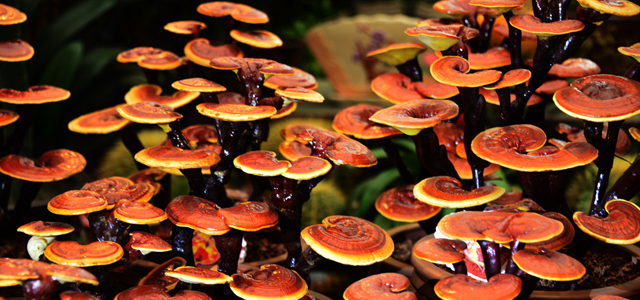Imagine a world where a simple, unassuming plant holds the power to solve a life-threatening problem affecting millions. Arsenic contamination—a silent and deadly menace—has tainted water supplies across the globe, posing severe risks to human health and the environment. Traditional solutions often require expensive technology, making clean water inaccessible for many communities.
But now, in a remarkable twist of science and nature, researchers have uncovered a groundbreaking discovery: a humble moss with the extraordinary ability to purify arsenic-laden water. Could this unassuming plant become the key to safe drinking water for millions?
Understanding the Arsenic Crisis: Why Is This a Big Deal?
Arsenic, a naturally occurring element, becomes a formidable adversary when it infiltrates our water sources. Its presence in groundwater is a global concern, with the World Health Organization (WHO) estimating that approximately 140 million people across at least 70 countries have been consuming water containing arsenic levels exceeding the WHO’s provisional guideline value of 10 μg/L.
The pathways through which arsenic contaminates water are both natural and anthropogenic. Geologically, arsenic is embedded in the Earth’s crust and can leach into groundwater under certain conditions. Human activities, notably mining and the use of arsenic-based pesticides, exacerbate this contamination. A study highlighted that arsenic pollution due to high concentrations in groundwater, soil, and food is recognized as a foremost human health issue globally.
The health implications of arsenic exposure are severe and multifaceted. Chronic ingestion leads to arsenicosis, characterized by skin lesions, peripheral neuropathy, gastrointestinal symptoms, diabetes, cardiovascular diseases, developmental toxicity, and cancers of the skin and internal organs.
The crisis is pervasive, affecting regions worldwide. In Southeast Asia, countries like Bangladesh and India face significant challenges, with millions exposed to arsenic-contaminated groundwater. In the United States, areas such as the Southwest and parts of New England report elevated arsenic levels in drinking water.
The environmental ramifications are equally concerning. Arsenic-laden water used for irrigation leads to soil contamination, affecting crop quality and introducing the toxin into the food chain. This bioaccumulation poses risks not only to human health but also to wildlife, disrupting ecosystems and biodiversity.
The Discovery of the Arsenic-Absorbing Moss

In the serene wetlands of northern Sweden, researchers from Stockholm University have uncovered a remarkable natural solution to arsenic contamination: the aquatic moss Warnstorfia fluitans. This unassuming plant has demonstrated an extraordinary ability to purify water by rapidly absorbing arsenic, a toxic element that poses significant health risks.
In controlled experiments, Warnstorfia fluitans removed up to 82% of arsenic from water within just one hour, effectively reducing the toxin to safe levels for human consumption. Research assistant Arifin Sandhi noted, “Our experiments show that the moss has a very high capacity to remove arsenic.”
The moss’s efficacy extends to both major forms of arsenic found in contaminated waters: arsenite (As(III)) and arsenate (As(V)). This versatility enhances its potential as a comprehensive solution for diverse arsenic pollution scenarios. Additionally, the moss’s resilience allows it to function effectively whether alive or dead, offering flexibility in its application for water purification.
The implications of this discovery are profound, particularly for regions like northern Sweden, where mining activities have led to arsenic-laden water sources. Associate Professor Maria Greger, leading the research group, expressed optimism: “We hope that the plant-based wetland system that we are developing will solve the arsenic problem in Sweden’s northern mining areas.”
The study detailing these findings has been published in the journal Environmental Pollution, contributing valuable insights to the field of phytoremediation—the use of plants to remove contaminants from the environment.
How Warnstorfia fluitans Works: The Science Made Simple
Warnstorfia fluitans, an aquatic moss native to northern Sweden, has demonstrated a remarkable ability to remove arsenic from contaminated water through a process known as phytofiltration. This process involves the plant absorbing and adsorbing arsenic, effectively reducing the toxin’s concentration in the water.
In controlled experiments, W. fluitans was able to remove up to 82% of arsenic from water within one hour, significantly lowering arsenic levels to make the water safe for human consumption. Research assistant Arifin Sandhi noted, “Our experiments show that the moss has a very high capacity to remove arsenic.”
The moss’s effectiveness is influenced by various environmental factors. Studies have shown that low pH levels can stress the plant, reducing its arsenic removal rate, while low oxygenation can increase its efficiency. Additionally, the moss can absorb both arsenite and arsenate, the two primary forms of arsenic found in contaminated water, making it versatile in different contamination scenarios.
Real-World Applications: How This Moss Can Change Lives
The discovery of Warnstorfia fluitans, an aquatic moss capable of removing arsenic from contaminated water, holds significant promise for addressing global water safety challenges. Its natural ability to absorb arsenic offers a sustainable and cost-effective solution, particularly beneficial for communities lacking access to advanced water treatment facilities.
In regions where groundwater is tainted with arsenic due to mining activities or natural geological conditions, integrating W. fluitans into constructed wetlands or natural water bodies could serve as an efficient filtration system. This approach not only purifies drinking water but also ensures that irrigation water is safe, thereby preventing arsenic from entering the food chain. As researcher Maria Greger explains, “Our aim is that the plant-based wetland system we are developing will filter out the arsenic before the water becomes drinking water and irrigation water. That way, the arsenic will not make it into our food.”
The moss’s resilience and adaptability make it suitable for various environmental conditions. Studies have shown that W. fluitans can thrive in different climates, making it a viable option for countries around the world. Its low-resource needs and natural adaptability mean it could thrive in various climates, making it a viable option for countries around the world.
Implementing W. fluitans in water treatment strategies could significantly reduce the health risks associated with arsenic exposure, such as skin lesions, cancer, and cardiovascular diseases. Moreover, by providing an eco-friendly alternative to chemical treatments and energy-intensive filtration systems, this moss-based solution aligns with global sustainability goals.
Practical Tips for Reducing Arsenic Exposure Today
Reducing arsenic exposure is crucial for maintaining good health, especially in areas where contaminated water and food sources are prevalent. Here are practical steps you can take to minimize your risk:
- Test Your Water Supply: If you rely on well water or live in regions with known arsenic contamination, it’s essential to test your water regularly. Home testing kits are available, or you can contact local health authorities for professional testing services.
- Install Appropriate Water Filtration Systems: Consider using water treatment methods proven effective in removing arsenic, such as reverse osmosis, distillation, or iron oxide adsorption systems. These systems can significantly reduce arsenic levels in your drinking water.
- Modify Rice Preparation Methods: Rice can accumulate arsenic from soil and water. To reduce arsenic content, rinse rice thoroughly before cooking and use a higher water-to-rice ratio, such as six cups of water per one cup of rice, draining the excess water afterward.
- Diversify Your Diet: Limiting consumption of foods known to contain higher levels of arsenic, such as rice and certain seafood, can reduce your overall arsenic intake. Incorporate a variety of grains and proteins into your diet to minimize risk.
- Stay Informed About Local Water Quality: Keep abreast of local environmental reports and advisories about water quality. Awareness is key to avoiding contaminated water sources and making informed choices about food and water consumption.
- Use Arsenic-Free Water for Cooking and Drinking: Ensure that the water you use for cooking, drinking, and preparing beverages is free from arsenic. This is particularly important when preparing food for infants and young children.
- Limit Consumption of Apple Juice and Rice-Based Products for Children: Recent studies have found arsenic in apple juice and rice-based products. Limiting these in children’s diets can reduce exposure.

A Natural Solution to a Global Crisis
The discovery of Warnstorfia fluitans represents a beacon of hope in the fight against arsenic contamination—a silent crisis impacting millions worldwide. By harnessing the moss’s natural ability to absorb and immobilize arsenic, scientists have unveiled a sustainable, cost-effective solution that aligns with environmental preservation and human health. Whether used in wetlands, streams, or as part of larger water treatment systems, this humble moss has the potential to revolutionize water purification, particularly in low-resource communities where access to clean water is most critical.
While challenges like scalability and adaptation to diverse environments remain, the promise of Warnstorfia fluitans extends far beyond immediate applications. It stands as a powerful reminder that nature often holds the answers to humanity’s greatest problems. By continuing to invest in research and innovation, solutions like this moss can pave the way for a future where clean water is accessible to all—turning a small discovery into a life-saving global impact.
Sources:
- Arsenic poisoning in the Ganges delta. Nature, 401, 545. https://doi.org/10.1038/44052
- Selective removal of arsenate from drinking water using a polymeric ligand exchanger. Water Research, 39, 4993–5004. https://www.sciencedirect.com/science/article/abs/pii/S0043135405005877?via%3Dihub
- Arsenic symptoms, diagnosis and treatment update Summer 2002: http://www.Summer02arsenic.htm
- Phytofiltration of arsenic by aquatic moss (Warnstorfia fluitans)e: http://www.sciencedirect.com/science/article/pii/S026974911731206X

